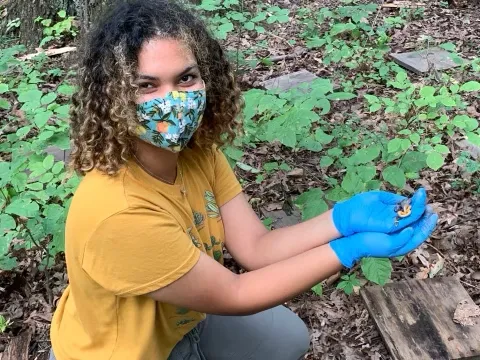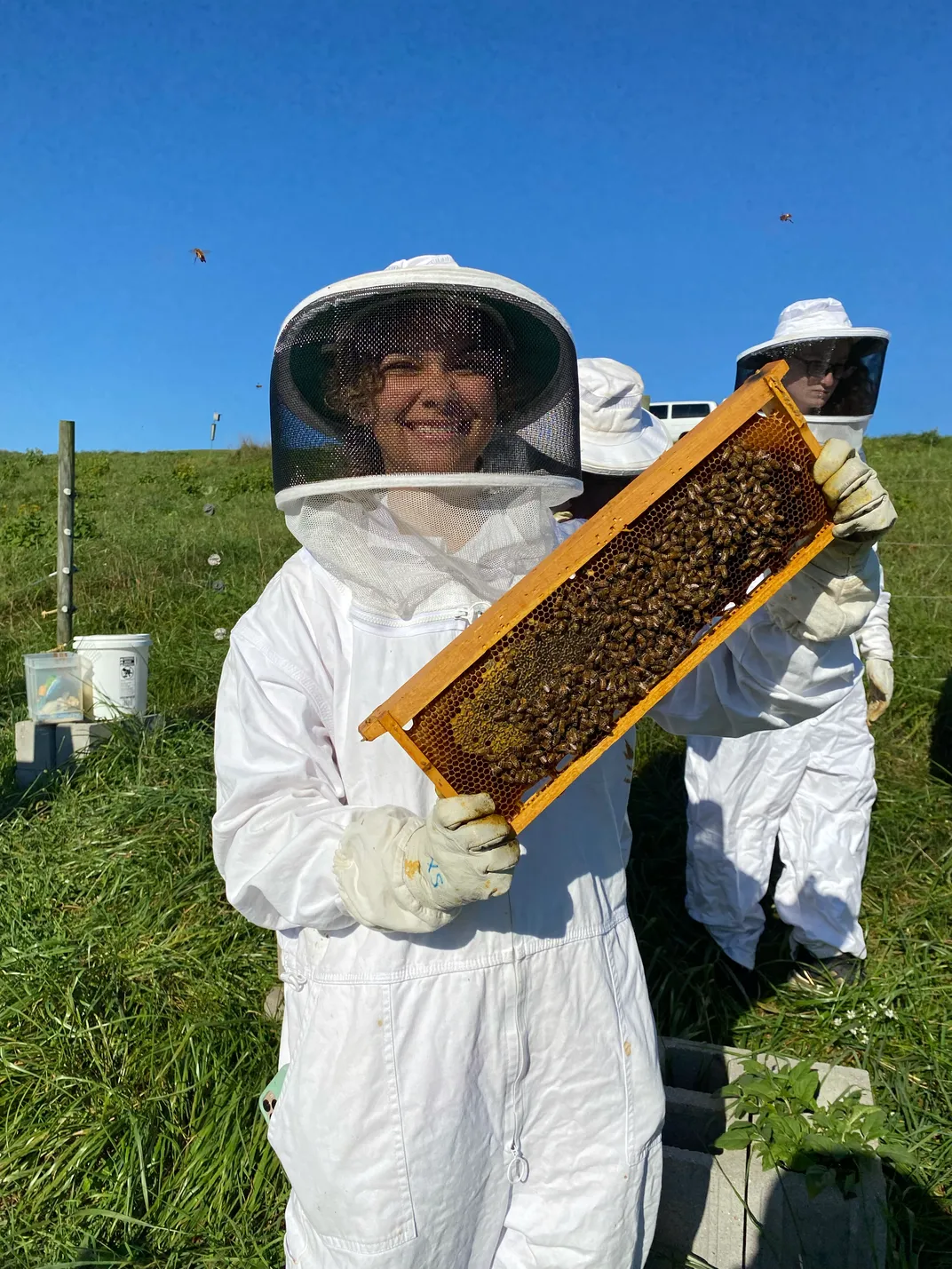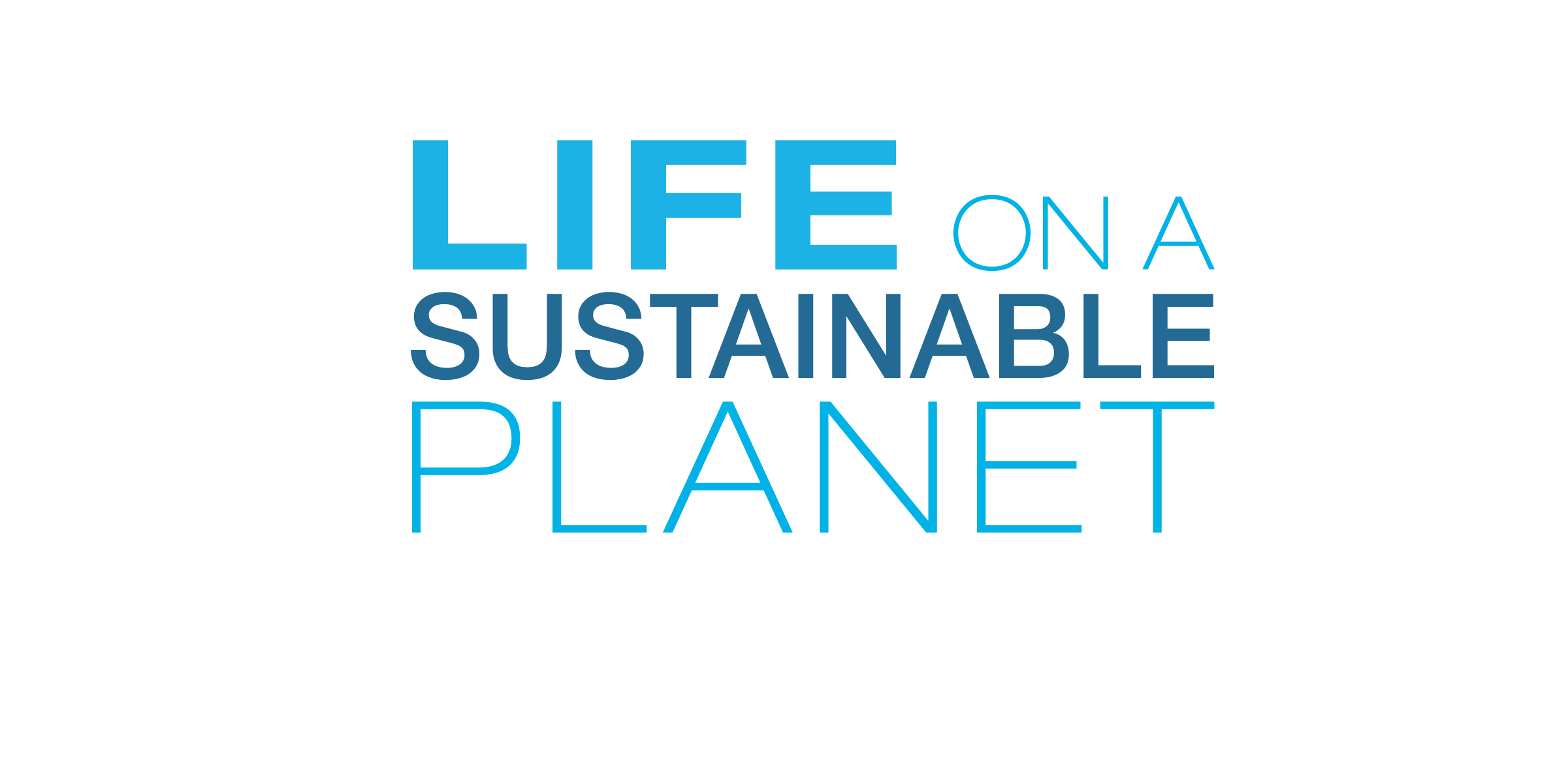Reflecting on a Semester of Conservation: A Student Interview
The Smithsonian-Mason School of Conservation offers undergraduate students a chance to dive head-first into the world of conservation and discover possible career paths.
/https://tf-cmsv2-smithsonianmag-media.s3.amazonaws.com/filer_public/3f/3b/3f3bd06c-9673-4aef-b35e-eca76cb299c4/img_2840.png)
Clark Farley is a senior at George Mason University majoring in Integrative Studies and is pursuing his Conservation Studies minor. As part of his practicum experience at the Smithsonian-Mason School of Conservation (SMSC), he interviewed a fellow undergraduate student, George Mason junior Nadia Gray, to highlight the semester experience at the Smithsonian-Mason School of Conservation.
Clark Farley: What drives your interest in conservation?
Nadia Gray: Growing up, I was always one of those kids who loved animals and playing in the dirt –I just never had any idea that you could make a career out of that. Participating in the salamander survey practicum was so affirming because I didn't know I would be so interested in conducting research until I came to SMSC. Even though we were out in the woods all day from 9 a.m. to 5 p.m. looking for red-back salamanders, something about it just felt right. Sure, it was hard work, but I wouldn't trade that experience for anything in the world. If you had asked me at the beginning of the semester what I wanted to do after college, I don't think I would be able to answer your question. But as this semester is ending, I realize that conservation is the field I belong in, and I'm not ready for this part of my career path to end. Since being given the opportunity to network with conservationists, I've realized that there is no shortage of species that need saving in this world. I know it seems like there's a lot of gloom and doom in the world right now, but just the idea that there are people in this world that help save animals for a living has helped me realize I’d like to be one of them someday.
Tell me a little about yourself and your involvement with conservation inside and outside the classroom.
Currently, I'm studying Environmental and Sustainability Studies at George Mason University and attending the Smithsonian-Mason School of Conservation. It has been the most rewarding experience in my college career. My favorite part about the Conservation Biodiversity and Society semester program at SMSC has been my practicum experience. These are sort of like mentorships where students can explore different conservation career paths. My semester practicum experience was a salamander survey project with Brian Gratwicke and Matt Evans, researchers at the Smithsonian.
Originally, I was interested in a wildlife rehabilitation practicum placement at the Blue Ridge Wildlife Center but decided to volunteer there on Saturdays instead. This felt like a way to get the best of both worlds – I was able to participate in field research and got hands-on experience with Virginia's native biodiversity.

During the semester, we also participated in professional development experience activities which included meeting scientists like research biologist Nucharin Songsasen, accompanying Professor Stephanie Lessard-Pilon in feeding the honeybees at the apiary on campus, volunteering with the Virginia Department of Wildlife Resources for chronic wasting disease testing, and bird banding with Thomas C Woods at the Clifton Institute. It's wild to think that I would have never been exposed to opportunities like these or met any of the wonderful Smithsonian staff before attending. I think things like this make SMSC a truly unique experience.
How do your volunteer work and practicum experience strengthen the concepts we are learning in the classroom?
One of my favorite aspects of the class schedule is that we would typically have a field trip that aligns with the subject matter in the classroom. I'm a very hands-on learner and sometimes struggle with grasping topics, so applying these concepts to the real world helped them become more tangible.
In terms of my volunteer work at Blue Ridge Wildlife Center, having the opportunity to work so closely with the native wildlife has allowed me to learn a lot about Virginia’s natural history and biodiversity. There’s a vast difference between viewing red-shouldered hawks from binoculars and assisting a wildlife veterinarian in examining the species. Aside gaining fieldwork experience that I certainly did not have coming into SMSC, my practicum has also given me an appreciation for forestry since we spent so much time out in the woods. I grew up in a big city, so being on the campus, which is located right outside of Shenandoah National Park, has been an amazing change of scenery.
Yes! Absolutely. The practicum was such an eye-opening opportunity to see what our careers could look like after we graduate and interface with science professionals. This semester has been a busy one for us. What motivates you to go above and beyond in your involvement?
Most, if not all, of the opportunities I’ve come across this semester were not an option while I was attending on-campus classes at George Mason. SMSC has exposed me to so many unique concepts and opportunities that I would have never even dreamed of. I’ve also learned so much about my own personal goals and interests during this semester. Unfortunately, I don’t know if I’ll ever get the opportunity to explore the field of conservation for the rest of my time as an undergrad, so I am making an effort to seize every chance I get while I still can.

At the beginning of this school year, I had zero intention of attending graduate school. After spending a semester at SMSC and experiencing conservation first-hand, I'm not ready to close this chapter in my life. I feel like I spent so much of my time as an undergraduate trying to figure out what I wanted to do – now that I know I'm interested in conservation, I can only imagine how many opportunities I've missed out on! Because of this, I'm currently interested in applying to graduate school to study Zoology. By doing so, I hope to get the chance to participate in more research opportunities like I did this semester with the salamander survey. My goal is to become a conservation biologist someday and be able to answer "…I save animals" to anyone who asks what career path I chose.
I love that you are so passionate about your trajectory in the conservation world. I know that for me, the Smithsonian-Mason School of Conservation was a phenomenal opportunity to figure out what suited me well and what wasn't the right track for me. What is one lesson or message you would like to give incoming SMSC students or students interested in the program or studying conservation elsewhere?
Apply yourself! The amount of hands-on experience, especially fieldwork opportunities, SMSC has provided me is something I would have never received had I not participated. Obviously, it's important to focus on your class assignments, but that's not the point of the program. Especially if you're someone like me who didn't know what they were interested in career-wise, use your time as an undergrad to experiment with different conservation opportunities. I had no idea I would be interested in research until I participated in my practicum. Take time to network with both your classmates as well as faculty. In my experience, my professors at SMSC are very personable and are more than happy to help you get connected with the appropriate mentors to help further your career path. Since conservation is such a small field, it's not unrealistic that some of the people you meet could be your future employers or coworkers. In fact, many of the Smithsonian Conservation Biological Institute staff are SMSC alumni!
I can't agree with you more! This program has been beneficial for career networking and meeting people who do work I hope to see myself doing someday. I'm incredibly grateful for the chance to have real-world mentorship from a science communicator and to receive the high-caliber training and instruction that I got at SMSC. Thank you so much for telling me about your experience at the Smithsonian-Mason School of Conservation, and I hope more students will see this program as a great opportunity from what you've shared.
To learn more about the Smithsonian-Mason School of Conservation and enroll in courses, visit smconservation.gmu.edu.
